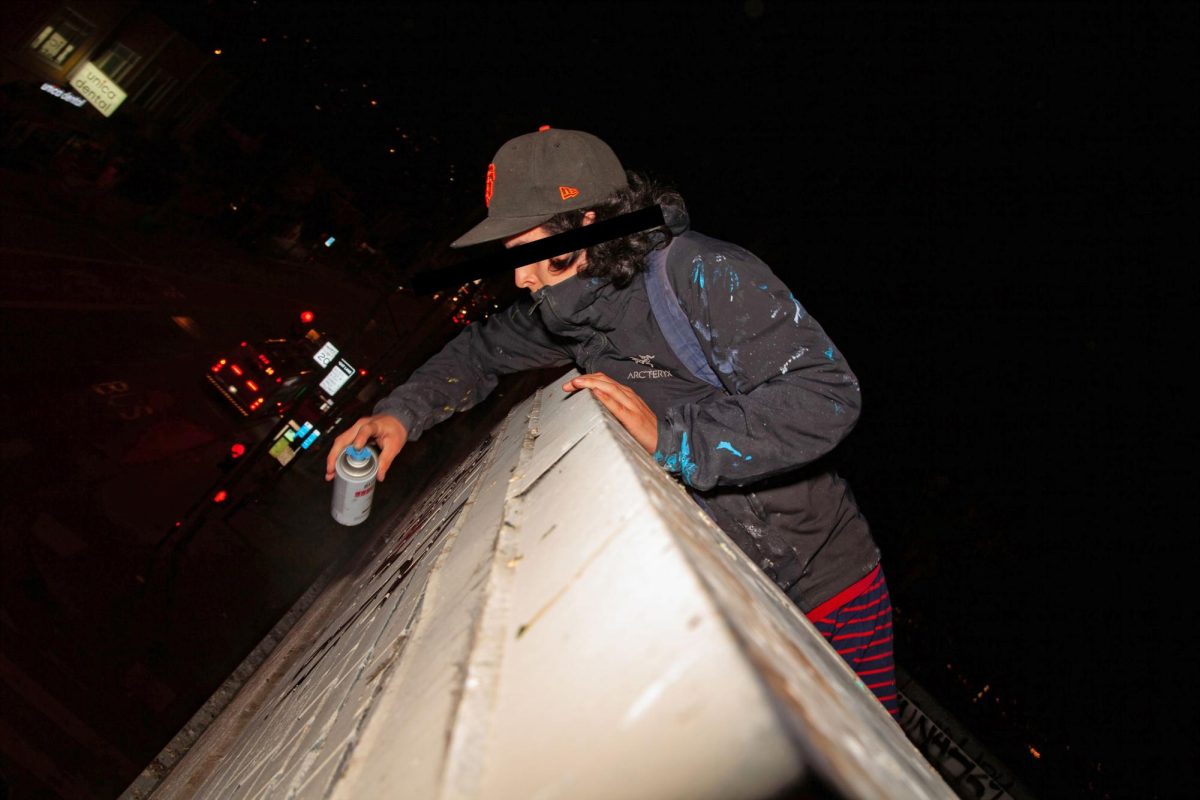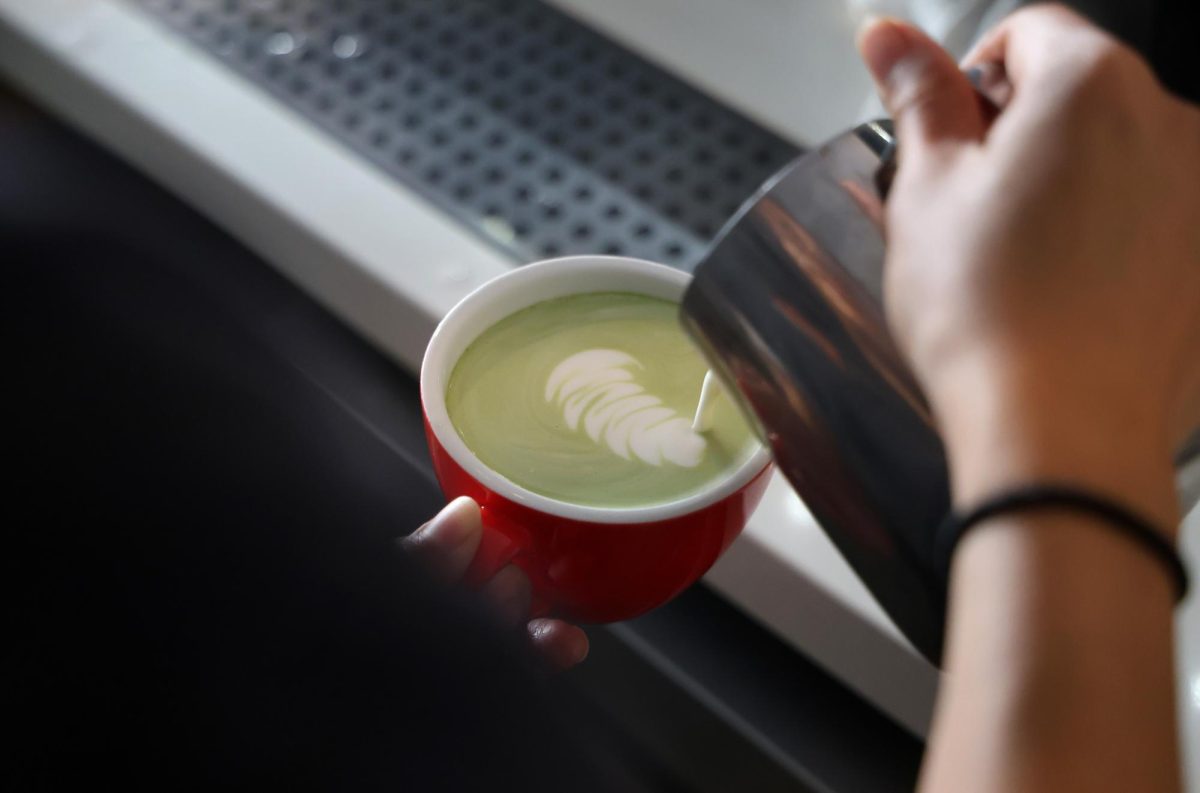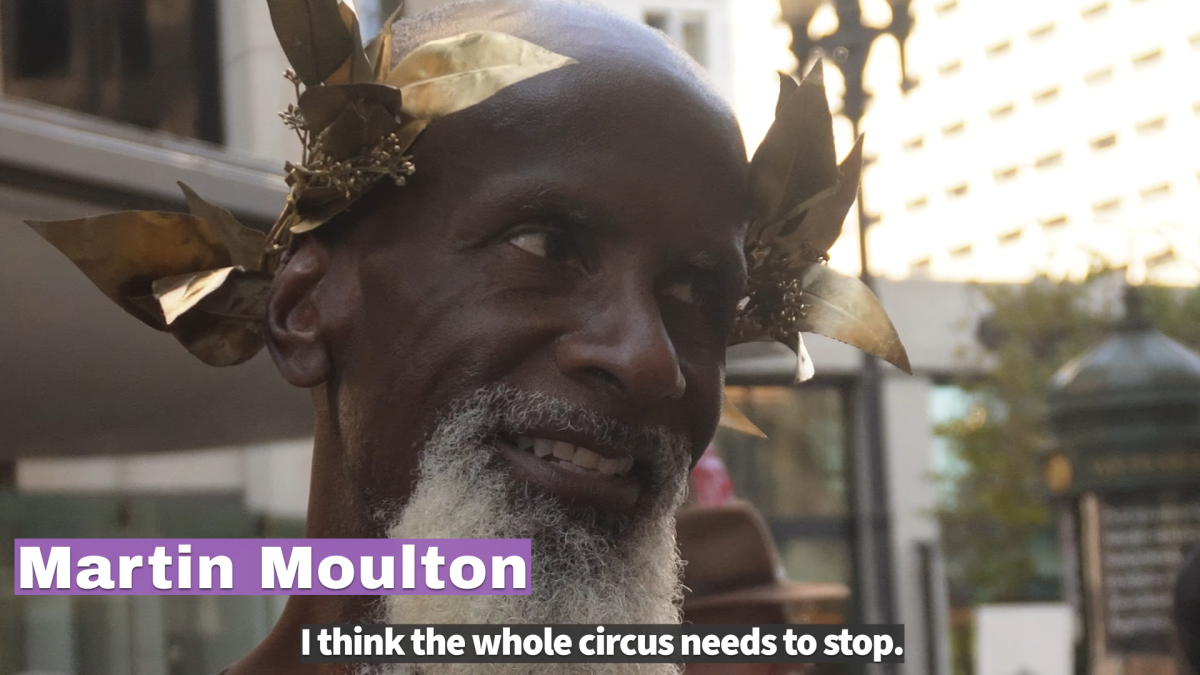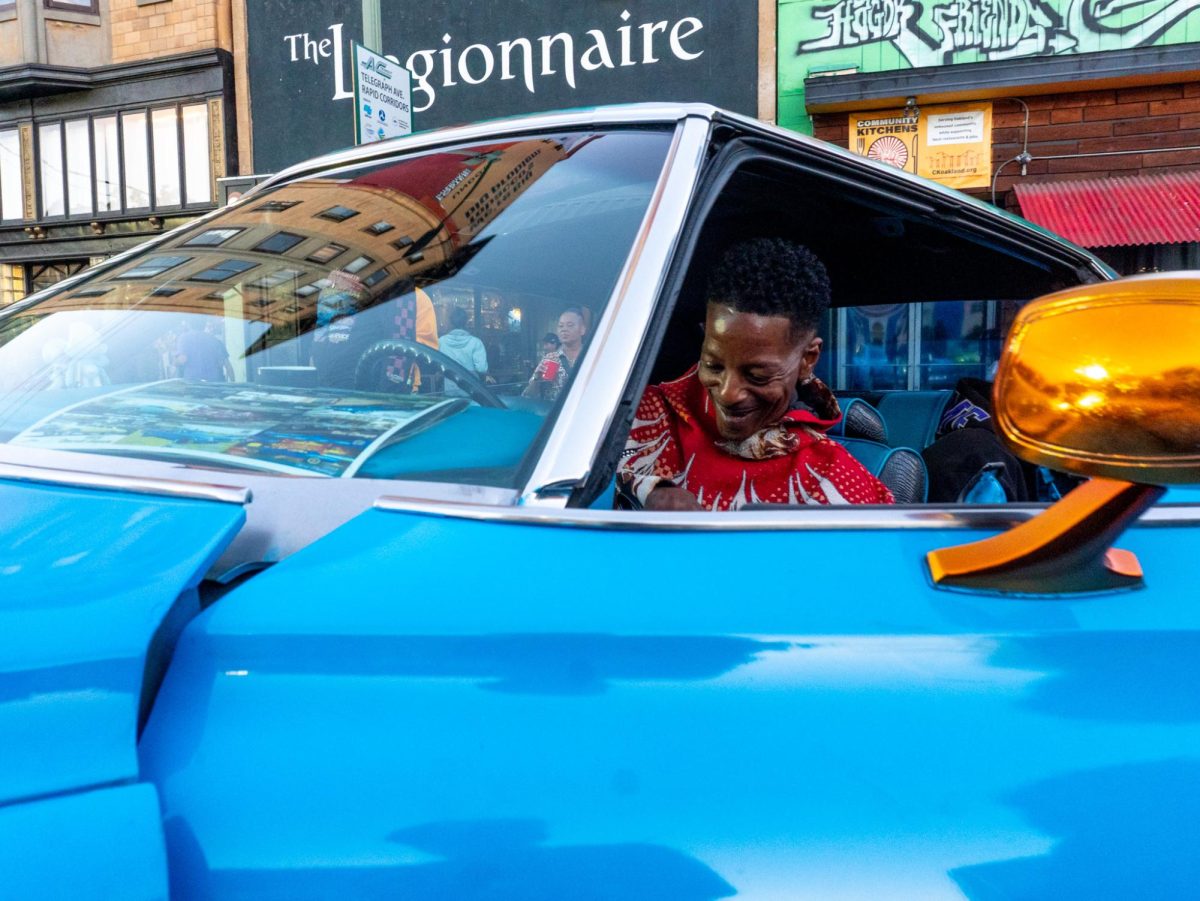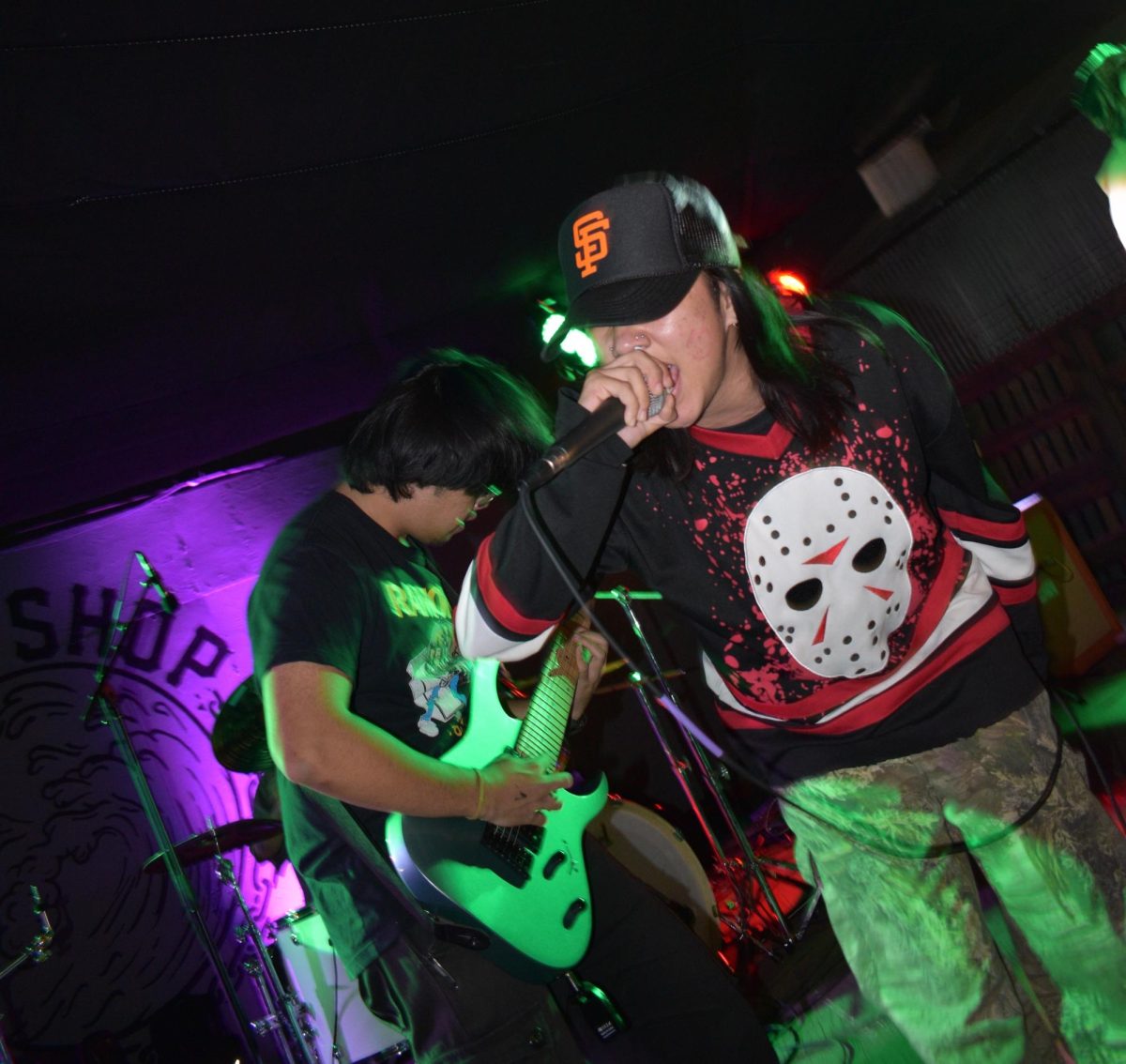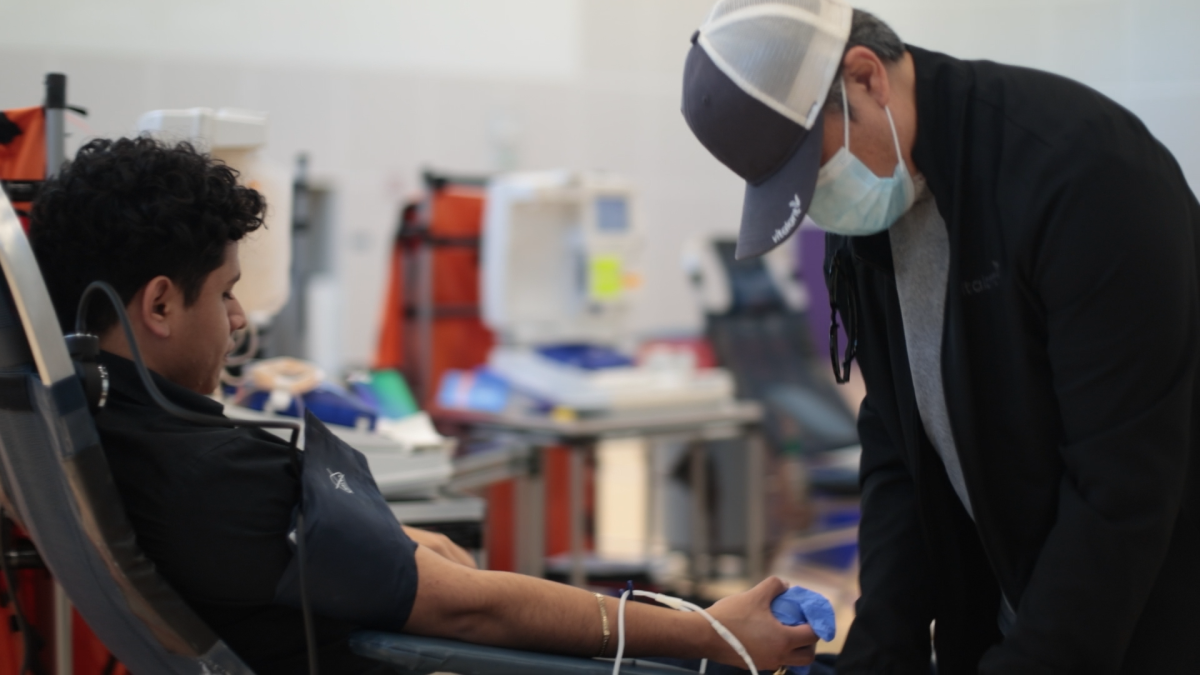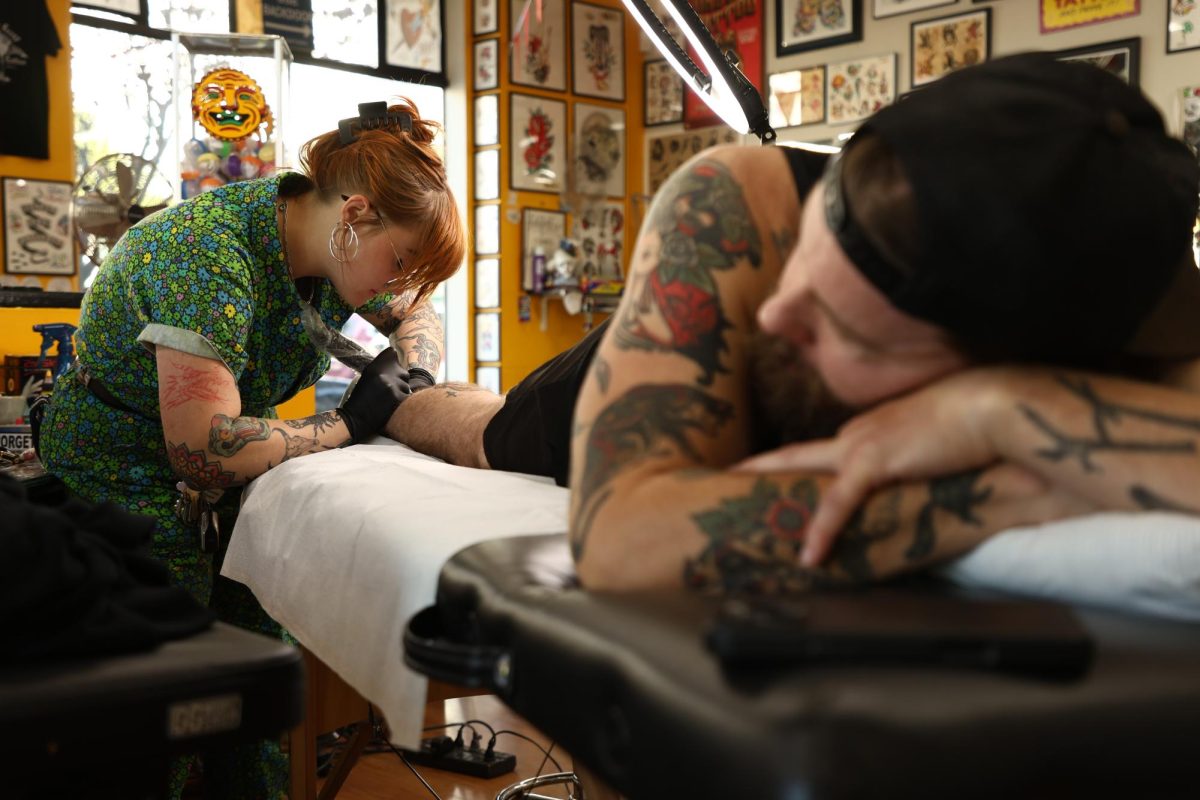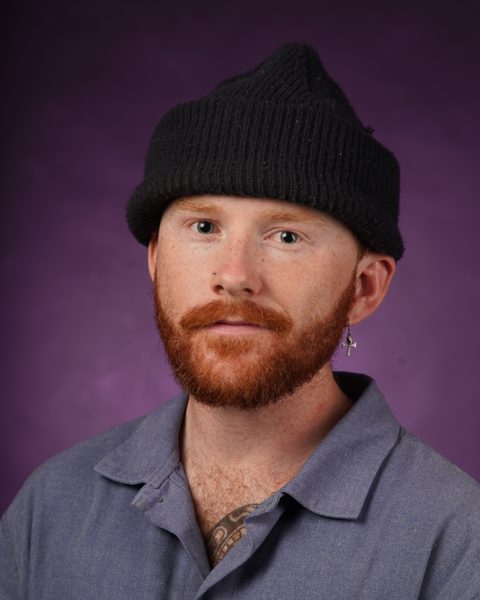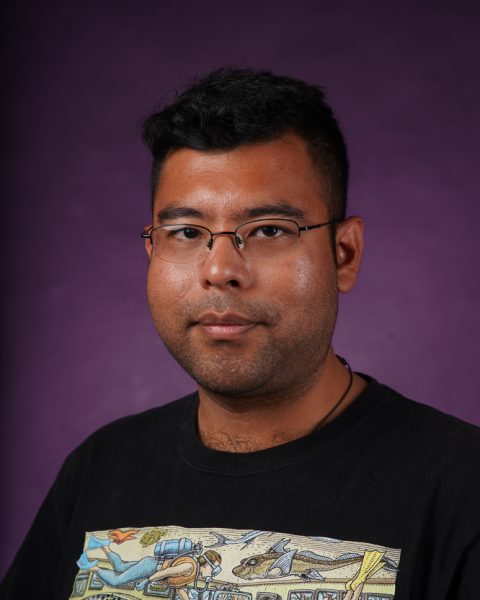On a warm Thursday night in San Francisco’s Mission District, the bustling streets come to life as the veil of night creeps over the city. Despite people returning home for the night, the neighborhood is full of young couples on dates, street vendors selling savory meals and sports fans eager for Thursday Night Football.
In the midst of the action are three men wearing hoodies and carrying tote bags. They mysteriously patrol the block in search of a wall. In an instant, two of the men take out cans of spray paint and start writing out letters, quickly outlining and filling their names. The third man is on the corner, carefully watching for police or any sign of interference. The mixing balls of the spray cans rattle with every pass that is made.
In a matter of minutes, the wall goes from being blank to bearing the names of the graffiti writers who lurk the area.
According to Vandal Memories, an online article in the blog The Microscopic Giant, Graffiti has become a dominant subculture in San Francisco. It grew globally in the 1980s and found its way to the Bay Area around that same time. With the tech boom and gentrification of the city in the last few decades, graffiti has become more underground.
The creation of the anti-graffiti task force in the San Francisco Police Department also seeks to prevent graffiti in the city. According to SFPD, it is estimated that nearly $20 million is spent to clean up graffiti in San Francisco. It is also a crime and can lead to fines and jail time for those caught participating in the act.
Graffiti writer Hotrod said that he got into graffiti through skateboarding in his high school years. (See editor’s note below regarding anonymity) His friends would have a blackbook, or a sketchbook, to draw in. Hotrod is a member of graffiti crew AMC. Rukoe, a graffiti writer affiliated with crews WL and ISB, said that he got into graffiti after watching his cousins do gang graffiti. He then went on to explain why he continues to do graffiti.
“To keep it real, I like fucking shit up. Destruction, just take out anger,” said Rukoe. “That’s why I like doing it.”
A crew is a collaborative of graffiti writers that consistently paint together. They can be citywide, statewide or even worldwide. The letters are abbreviations of the crew’s actual name. For example, Hotrod said that AMC can stand for “Art Meets Crime” and “Another Mural Crushed.”
“Sometimes, I be contemplating why the fuck I even do this shit,” Hotrod said. “There’s a destruction aspect, there’s an artistic aspect of it. Some days, that’s the only thing that can get me out of the house, which is why I would just walk a couple of blocks and write on some shit. That’s pretty much the motivating factor; there’s always something new to go explore and write on.”
For many writers, graffiti can be an escape from the daily constraints of life.
“Everybody does graffiti for their own reasons,” Hotrod said. “But I think at the end of the day, a lot of people do it for an escape from whatever it may be. There’s a lot of people, you know, dealing with a lot.”
According to an article in The Art Story,a non-profit that supports the arts, graffiti became a way for young people to express themselves in the 1960s and 1970s. As graffiti became more popular, styles changed, and it became more developed into what it is today. With these changes, sophistication in the scene grew too. Crews became more common, and politics came into play with graffiti.
“A lot of negativity comes with it when you get into it,” Rukoe said. “A lot of politics. You can’t paint with certain people.”
In the United States, graffiti is categorized as a form of vandalism. It is a punishable offense and can lead to incarceration. According to California’s Penal Code 594, vandalism can become a felony if the amount of destruction is above $400. Despite the laws, graffiti writers continue to engage in the activity.
“I’ve been locked up four times for graffiti,” Rukoe said. “I’ve been in multiple fights because of it. Lost a job because of it. I still do it though, I love that shit.”
4Now is a graffiti writer who represents crews ANT and WNL. He got caught painting and spent a weekend in jail.
“That shit was not fun,” 4Now said. “Terrible experience but also a very humbling one where you get a grasp of reality. This is a game that you shouldn’t think is a game. You should think of it as more real life.”
When it comes to painting buildings, 4Now and Hotrod prefer to avoid smaller businesses, such as mom-and-pop shops.
“When it comes to mom-and-pop shops, I try and stay away from it. They’re part of the community, I’m part of the community,” Hotrod said. “We’re probably in the same tax bracket.”
Smaller businesses are still affected by vandalism, especially from graffiti. In the city, San Francisco Public Works reports graffiti and keeps tabs on it. They also issue notices to businesses on which graffiti has been found.
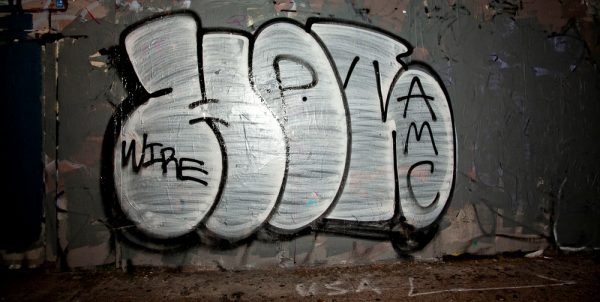
Businesses are given 30 days to remove the graffiti on their own time. If it is not done, the business gets fined. San Francisco Public Works also provides paint to businesses who ask for it, but it usually does not match the walls of the building. Nick Giordani, a bartender at Route 101, feels that the city is adding more stress to businesses that are already struggling.
“It’d be one thing if we have paint thinner or replace a window,” Giordani said. “To be fined by the city I think is just absurd.”
Despite graffiti’s effects on businesses, Giordani understands that graffiti is a major part of San Francisco’s subcultures.
“You can’t live in San Francisco, especially in the part that I’m in, and hate graffiti,” says Giordani. “It’s a graffiti city. It’s part of the culture, it’s not going away.”
Rukoe and Hotrod are aware of how the city is handling graffiti with these notices. They both remain firm on their stance to continue vandalizing the properties.
“It’s vandalism. It’s in the name, it’s all part of the game,” says Rukoe. “If it’s a banging spot, I’m gonna smack it. If it says ‘For Lease’ in the front, it’s a for sure go.”
When it comes to getting paint, markers and other supplies, many writers turn to racking, or stealing.
“[There] was a good time where I was buying a lot of paint, and that shit is expensive,” 4Now said. “As a younger adult, it’s hard to fund that habit, and over time you’re like, ‘Damn, I can’t spend $100 to make my artwork look good if I want to do it everyday.’”
Hotrod and Rukoe said that they’ve moved away from racking and don’t want to be caught for something that can be avoided.
With local elections in full swing, police activity regarding graffiti has ramped up. By doing this, residents of these areas see things getting done and give their vote to the person responsible for their measures.
“They’ve been catching people lacking here and there,” said Hotrod. “It’s good for the press.”
However, writers are still painting every night and filling up empty walls. To put it simply, the city’s methods to stop graffiti are not working.
“Whatever they’re doing, keep it up,” Rukoe said.
On most nights, the duo can go the whole night without being interrupted by law enforcement. When the cops do arrive, Rukoe added, sometimes they don’t care.
“There’s been plenty of times me and Rukoe have been mid fill, make eye contact [with a cop] and keep it pushing,” Hotrod said, while recounting a time they ran into law enforcement while painting. “We was in the Town [Oakland], sheriff waved at this dude [Rukoe].”
Even with the risks that graffiti can bring, 4Now has fun tagging buildings around the city with his name.
“There’s hills and valleys where you do this shit,” 4Now said. “You want to do it all the time, and there’s time where you take it more chill. Do it for a few weeks or a month and you’re sparked out of nowhere again. And you just do it because it is fun to do.”
Hotrod, Rukoe, 4Now, Ribity and Amsn, were granted anonymity to protect their identities due to their actions captured in the reporting and photography of this story. An explanation of the anonymity granted to the graffiti writers in this story was added on 11/04/24.



